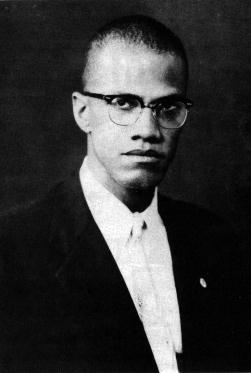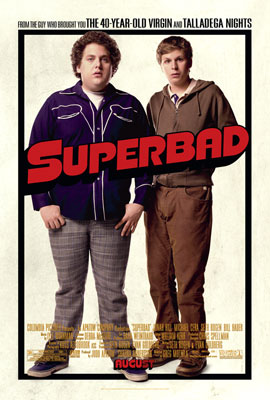Monday, November 29, 2004
The Dollar Dies in Cuba
Yet again Cuba successfully gives the U.S. the finger by putting an end to the use of the green-back on Cuban soil, and by actually taxing the U.S. currency. Up until this month the U.S. dollar was the unofficial currency in Cuba, but if you’re planning a trek to Cuba and are thinking of bringing a pile of U.S. dollars, don’t bother. Things have changed…for the better. The “de-legalization” of the dollar in Cuba is a bit complicated, but interesting, and certainly an economic first. Here’s a quick run down for the astute economist or the meandering traveler.
After the Soviet Union fell apart, and the U.S. isolated Cuba like a SARS patient on the world market, the island legalized the use of U.S. dollars in order to have some means of foreign exchange. As such, all foreign transactions took place in dollars, and tourists brought and spent dollars in the island. A dollar market emerged in Cuba. It contained pretty things like Coca-Cola, fancy rum, tasty beer, potato chips, Mercedes Benzes and hookers. The national Peso (CUP), what every Cuban uses and transacts in, continued to exist, but it didn’t have the purchasing power to buy pretty things. You could still get rum and beer with national pesos, but you never really knew where these things came from and what might be floating in them. Let’s not even get into the sorts of cars and hookers on the peso market.
With the legalization of the dollar came hording of wealth and two distinct classes of life in the island. People working in tourism had better access to tips, and could easily make a months wage in a few days on the job. Likewise, people with relatives in Miami frequently received handsome remittances. For the past few years the Cuban government has been trying to figure out a way to redistribute the dollar wealth across the island, but have had little success.
In October the presidents of the Cuban banks said lets remove the dollar from the market. Since 1992 a Convertible Peso (CUC) nick-named the Chavista, existed in Cuba. It is pegged to the value of the dollar. It never really took off in Cuba, and most people just kept using green-backs. But as of November 8, Chavistas replaced the dollar. As a means to get the dollars off of the streets, and to stick it to the U.S., the Cuban government decided to put a flat tax of 10% on every U.S. dollar. So, a dollar is now worth $0.90 CUC. A very clever and a very ballsy move. Now every dollar that gets sent to Cuba from Florida is reduced in value by 10%. That 10% is then put into state programs instead of some rico’s pocket. Where does that money go? It mostly goes to the provision of food and healthcare. However, there is an idea swimming around of giving every Cuban a credit card in CUC that will be magically topped up with $35 CUC every month to go buy stuff like blue jeans, cosmetics, household appliances, tasty beer that doesn’t have crap floating in it and such and such. This idea emerged in 1989, but thanks to the embargo that plan was quickly dismissed.
Now! If you want to convert from CUC into USD, say when a tourist is leaving the country, the exchange rate is still 1 to 1. $100 CUC = $100 USD, but $100 USD = $90 CUC. Essentially, the Cubans have taxed the U.S. dollar as a way of saying thanks for the 43 year blockade. Perhaps other nations should pull the same stunt. If the U.S. doesn’t reopen the border to Canadian beef and lumber, why not tax their dollar, and send that revenue to farmers? I mean if the IMF can reinvent the value of other currencies overnight, like they did to Ecuador in the early 90s, why can’t other nations practice the same sort of magic towards the U.S?
So if you are going to Cuba you can change the following currencies without penalty: Canadian Dollar, Euro, British Pound, Swiss Franc, Australian Dollar, New Zealand Dollar, and Japanese Yen. The country’s long term goal is to get enough foreign exchange on the world market and then float the CUC away from the, what appears to be, crashing U.S. dollar.
Perhaps the best currency exchange game with Cuba still lies with their cigars. Take about $0.50 worth of fine Pinar del Rio tobacco, say it’s rolled on the thighs of virgins and then smuggle it into the US to sell to the Yanks for $80.00 USD a pop. Ah, the sweet sweet smoky smell of economic justice.
After the Soviet Union fell apart, and the U.S. isolated Cuba like a SARS patient on the world market, the island legalized the use of U.S. dollars in order to have some means of foreign exchange. As such, all foreign transactions took place in dollars, and tourists brought and spent dollars in the island. A dollar market emerged in Cuba. It contained pretty things like Coca-Cola, fancy rum, tasty beer, potato chips, Mercedes Benzes and hookers. The national Peso (CUP), what every Cuban uses and transacts in, continued to exist, but it didn’t have the purchasing power to buy pretty things. You could still get rum and beer with national pesos, but you never really knew where these things came from and what might be floating in them. Let’s not even get into the sorts of cars and hookers on the peso market.
With the legalization of the dollar came hording of wealth and two distinct classes of life in the island. People working in tourism had better access to tips, and could easily make a months wage in a few days on the job. Likewise, people with relatives in Miami frequently received handsome remittances. For the past few years the Cuban government has been trying to figure out a way to redistribute the dollar wealth across the island, but have had little success.
In October the presidents of the Cuban banks said lets remove the dollar from the market. Since 1992 a Convertible Peso (CUC) nick-named the Chavista, existed in Cuba. It is pegged to the value of the dollar. It never really took off in Cuba, and most people just kept using green-backs. But as of November 8, Chavistas replaced the dollar. As a means to get the dollars off of the streets, and to stick it to the U.S., the Cuban government decided to put a flat tax of 10% on every U.S. dollar. So, a dollar is now worth $0.90 CUC. A very clever and a very ballsy move. Now every dollar that gets sent to Cuba from Florida is reduced in value by 10%. That 10% is then put into state programs instead of some rico’s pocket. Where does that money go? It mostly goes to the provision of food and healthcare. However, there is an idea swimming around of giving every Cuban a credit card in CUC that will be magically topped up with $35 CUC every month to go buy stuff like blue jeans, cosmetics, household appliances, tasty beer that doesn’t have crap floating in it and such and such. This idea emerged in 1989, but thanks to the embargo that plan was quickly dismissed.
Now! If you want to convert from CUC into USD, say when a tourist is leaving the country, the exchange rate is still 1 to 1. $100 CUC = $100 USD, but $100 USD = $90 CUC. Essentially, the Cubans have taxed the U.S. dollar as a way of saying thanks for the 43 year blockade. Perhaps other nations should pull the same stunt. If the U.S. doesn’t reopen the border to Canadian beef and lumber, why not tax their dollar, and send that revenue to farmers? I mean if the IMF can reinvent the value of other currencies overnight, like they did to Ecuador in the early 90s, why can’t other nations practice the same sort of magic towards the U.S?
So if you are going to Cuba you can change the following currencies without penalty: Canadian Dollar, Euro, British Pound, Swiss Franc, Australian Dollar, New Zealand Dollar, and Japanese Yen. The country’s long term goal is to get enough foreign exchange on the world market and then float the CUC away from the, what appears to be, crashing U.S. dollar.
Perhaps the best currency exchange game with Cuba still lies with their cigars. Take about $0.50 worth of fine Pinar del Rio tobacco, say it’s rolled on the thighs of virgins and then smuggle it into the US to sell to the Yanks for $80.00 USD a pop. Ah, the sweet sweet smoky smell of economic justice.



















Post a Comment